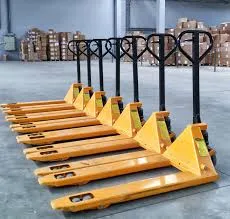


Anti-Fall Protection Enhancing Workplace Safety
In modern construction and industrial settings, safety is a paramount concern. Among the myriad of risks that workers face, falls are one of the leading causes of injuries and fatalities. In fact, according to the U.S. Occupational Safety and Health Administration (OSHA), falls account for a significant percentage of workplace accidents. Therefore, implementing an effective anti-fall protection system is essential for safeguarding workers and ensuring a productive work environment.
Anti-fall protection encompasses a range of safety measures and equipment designed to prevent falls from heights, whether that's from scaffolding, ladders, rooftops, or even when working on elevated platforms. These measures not only protect the physical well-being of employees but also reduce financial liabilities for employers, boost morale, and enhance overall productivity.
Anti-Fall Protection Enhancing Workplace Safety
In addition to personal protective equipment, guardrails and safety nets are often employed in construction sites and industrial settings. Guardrails are installed around elevated platforms and scaffolding to act as a physical barrier, preventing accidental slips or falls. Safety nets provide additional protection by catching falling workers or tools, thereby preventing injuries and damages.

Another essential component of an anti-fall protection strategy is regular safety training and education. Workers must be aware of the hazards associated with their jobs and the importance of adhering to safety protocols. Employing safety meetings, demonstrations, and refresher courses can keep fall protection practices at the forefront of employees' minds. When workers understand the risks and know how to use safety equipment correctly, the likelihood of accidents decreases dramatically.
Moreover, conducting thorough risk assessments is crucial. Identification of potential fall hazards in the workplace allows for tailored strategies to mitigate those risks. This proactive approach can involve redesigning workspaces, ensuring that equipment is properly maintained, and implementing safer work practices. Regular inspections can identify areas for improvement and ensure that safety measures remain effective over time.
Technology also plays a significant role in enhancing anti-fall protection. Innovations such as aerial drones can help assess hard-to-reach areas for potential hazards, while wearable technology can monitor workers’ movements and alert supervisors if someone is at risk of a fall. These advancements not only improve safety but can also enhance overall efficiency by streamlining inspection processes.
In conclusion, anti-fall protection is a vital aspect of workplace safety that cannot be overlooked. By integrating personal protective equipment, physical barriers, ongoing training, thorough risk assessments, and technology, organizations can create a robust safety culture. Prioritizing fall protection not only protects employees but also fosters a safer and more productive work environment. Ultimately, investing in comprehensive anti-fall protection measures leads to reduced accidents, lower costs, and a commitment to the health and safety of all workers. Employers who take these precautions not only comply with regulations but also demonstrate a genuine care for their workforce, which can significantly enhance employee loyalty and company reputation.



